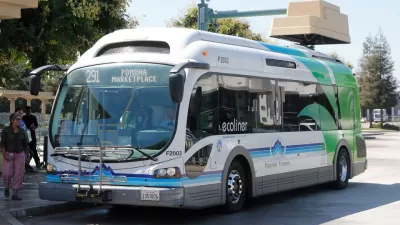Unprecedented transit build-out in California could transform the state. Now leaders are working to ensure the infrastructure connecting major cities also benefits the communities it touches along the way.
The leaders of California's High Speed Rail project and Los Angeles County Metro shared strategies for meeting this challenge at ULI's Transit Oriented Los Angeles.
In Los Angeles, Metro is trying out new methods to ease the hardship of construction periods that disrupt street-level activity. Its more direct approaches include a Business Interruption Fund, which compensates businesses impacted by construction, and a Business Solutions Center, which offers special guidance to small businesses.
In this new wave of expansion, the agency is also embracing a broader guiding principle known as "transit-oriented communities," which widens the scope of transit-oriented development planning to the field of entire neighborhoods.
But high-speed rail will pass through a number of rural areas in the middle of the state that don’t have the level of resources, existing transportation infrastructure, or market activity accessible in Los Angeles County. Historically, the Central Valley region has been shut out of investments in transportation that went not "through it," but "past it" on its way to metropolitan areas in the north and the south.
Not so for CAHSRA, CEO Jeff Morales says. Through local-hire programs and small business partnerships, the Authority is determined to bring one of the poorest regions in the country into the fold: "We’re transitioning from looking at high-speed rail as something to get people from San Francisco to LA and instead seeing it as tying together the state and reinforcing what’s happening in our cities."
Both agencies are collaborating to integrate the new infrastructure required by HSR into the county’s ongoing rail expansion plans, creating opportunities to prepare the growing city for the transit patterns of the future. "We have to think about not what LA is today, but what it’s going to be," Morales urged the audience.
The conversation was moderated by Planning Report publisher David Abel and reprinted in The Planning Report. It also covers Metro’s potential half-cent sales tax, and the Gold Line extension opening March 5.
FULL STORY: LA Metro & CAHSRA Collaborate on Aligning Community and Transportation Investment

Planetizen Federal Action Tracker
A weekly monitor of how Trump’s orders and actions are impacting planners and planning in America.

Chicago’s Ghost Rails
Just beneath the surface of the modern city lie the remnants of its expansive early 20th-century streetcar system.

San Antonio and Austin are Fusing Into one Massive Megaregion
The region spanning the two central Texas cities is growing fast, posing challenges for local infrastructure and water supplies.

Since Zion's Shuttles Went Electric “The Smog is Gone”
Visitors to Zion National Park can enjoy the canyon via the nation’s first fully electric park shuttle system.

Trump Distributing DOT Safety Funds at 1/10 Rate of Biden
Funds for Safe Streets and other transportation safety and equity programs are being held up by administrative reviews and conflicts with the Trump administration’s priorities.

German Cities Subsidize Taxis for Women Amid Wave of Violence
Free or low-cost taxi rides can help women navigate cities more safely, but critics say the programs don't address the root causes of violence against women.
Urban Design for Planners 1: Software Tools
This six-course series explores essential urban design concepts using open source software and equips planners with the tools they need to participate fully in the urban design process.
Planning for Universal Design
Learn the tools for implementing Universal Design in planning regulations.
planning NEXT
Appalachian Highlands Housing Partners
Mpact (founded as Rail~Volution)
City of Camden Redevelopment Agency
City of Astoria
City of Portland
City of Laramie





























